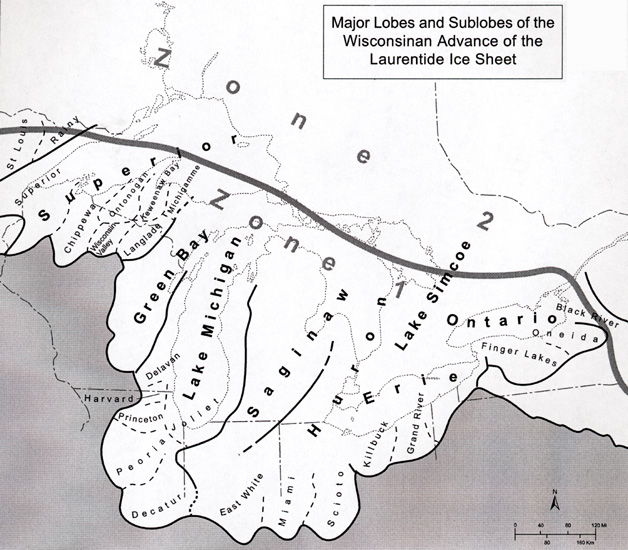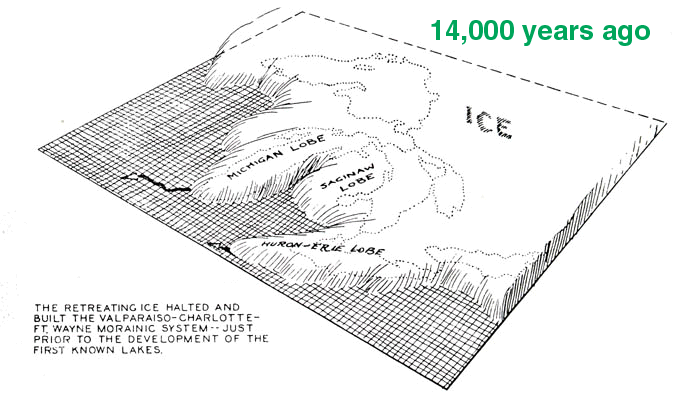MAJOR GLACIAL ICE LOBES
The glaciers advanced into the Great
Lakes region as a series of ice lobes, each lobe seeking out the lowest
preexisting spots on the landscape. To the various glacial lobes we have
given the names of the Great Lakes and bays which eventually occupied the
enlarged depressions after the ice had disappeared. Thus we had the
Superior Lobe, with the Keweenaw lobe as an offshoot; the Lake Michigan
lobe, with its Grand Traverse and Green Bay appendages; the Huron Lobe,
with its subordinate Saginaw Lobe which played as important a part as its
parent; and the Erie and Ontario Lobes. Slowly the lobes made their way
southward out of the old widened river valleys and during the climax of
the last, or Wisconsin stage of glaciation, all the lobes were welded
together south of the Great Lakes region, and advanced southward as one
broad sheet of ice or glacier with slightly lobate front. Not until the
ice melted back into southern Michigan did the ice front again become
separated into distinct lobes.

The ice lobes became, perhaps, more apparent during retreat than
they may have during the advancing phase of the glacier. The image
below shows the ice lobes as they would have looked about 14,000 years
ago.
This material has been compiled for educational use only, and may not be reproduced without permission. One copy may be printed for personal use. Please contact Randall Schaetzl (soils@msu.edu) for more information or permissions.